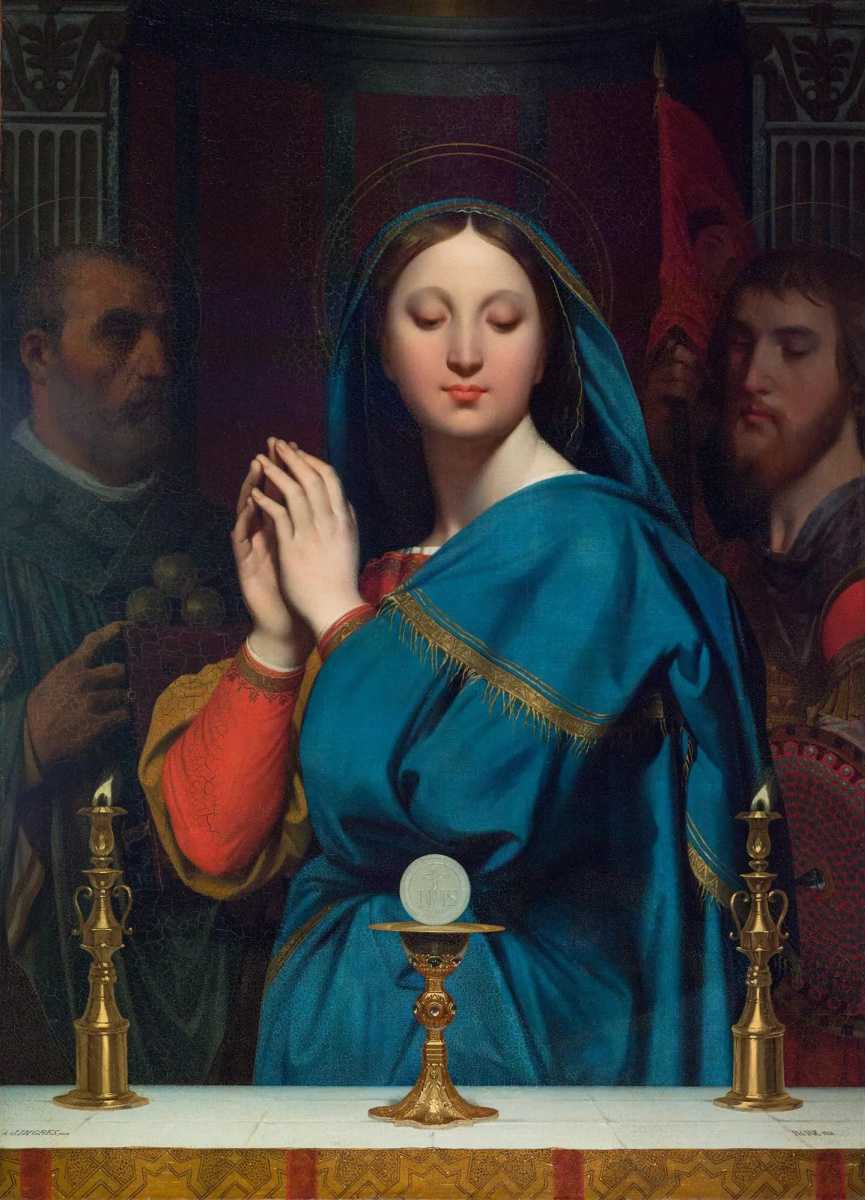log in
Enter site
Login to use Arthive functionality to the maximum
Madonna with Chalice
Jean Auguste Dominique Ingres • Painting, 1841, 116×84 cm
Description of the artwork «Madonna with Chalice»
At first sight, this Madonna seems to be dated the early XVI century and chanced to be lost among the later canvases, so old seems its style with sound citation of the Renaissance masters. There’s nothing to be surprised at, because it was painted by Jean-Auguste-Dominique Ingres. He was a French academic painter who considered his mission to keep the true doctrines but no novelties. Famous David called him one of his best students though Ingres believed that his real teacher was Raphael and claimed that art had selected the wrong path after Raphael. The artist was sure that the best way to improve the situation was to start with the Renaissance again and to cross out everything emerged and created after it. Ingres was so consistent and convincing denying the innovations that Eugène Delacroix called him a completely false prophet.
The Russian collections house only two artworks by Ingres; the Portrait of Count Nikolay Gouriev at the Hermitage Museum and the Madonna with a Chalice. The history of the painting is rather interesting. Ingres was commissioned to paint Madonna by the heir of the throne, future tzar Alexander II. That time the artist lived in Rome. The Saints in the shade behind the shining figure of Madonna, are Niсkolas of Bari (the patron of the heir’s father) and Alexander Nevsky (the heir’s patron depicted in the painting by his own request). The composition of the artwork in general resembles late artworks by Raphael. We could see similarity with the Madonna of the Candelabra performed in his studio in a demonstrative symmetrical composition and individual proportions of Madonna’s estranged face as well as direct reference – a pair of candelabra. Just as well we can find citations from the artist’s own artworks like Madonna’s pose, which is exactly the pose of Madonna depicted in the Vow of Louis XIII painted by Ingres in 1824.
Regardless the stunning painting technique, the artwork was not recognized in Russia, which was explained by a demonstrative catholic representation denied by Russian viewers. The matter was likely not in the faith-based differences but in excessive sophistication peculiar to Ingres turning serenity of Raphael’s Madonnas into an unpleasant coldness of the subject.
Author: Oksana Sanzharova
The Russian collections house only two artworks by Ingres; the Portrait of Count Nikolay Gouriev at the Hermitage Museum and the Madonna with a Chalice. The history of the painting is rather interesting. Ingres was commissioned to paint Madonna by the heir of the throne, future tzar Alexander II. That time the artist lived in Rome. The Saints in the shade behind the shining figure of Madonna, are Niсkolas of Bari (the patron of the heir’s father) and Alexander Nevsky (the heir’s patron depicted in the painting by his own request). The composition of the artwork in general resembles late artworks by Raphael. We could see similarity with the Madonna of the Candelabra performed in his studio in a demonstrative symmetrical composition and individual proportions of Madonna’s estranged face as well as direct reference – a pair of candelabra. Just as well we can find citations from the artist’s own artworks like Madonna’s pose, which is exactly the pose of Madonna depicted in the Vow of Louis XIII painted by Ingres in 1824.
Regardless the stunning painting technique, the artwork was not recognized in Russia, which was explained by a demonstrative catholic representation denied by Russian viewers. The matter was likely not in the faith-based differences but in excessive sophistication peculiar to Ingres turning serenity of Raphael’s Madonnas into an unpleasant coldness of the subject.
Author: Oksana Sanzharova


